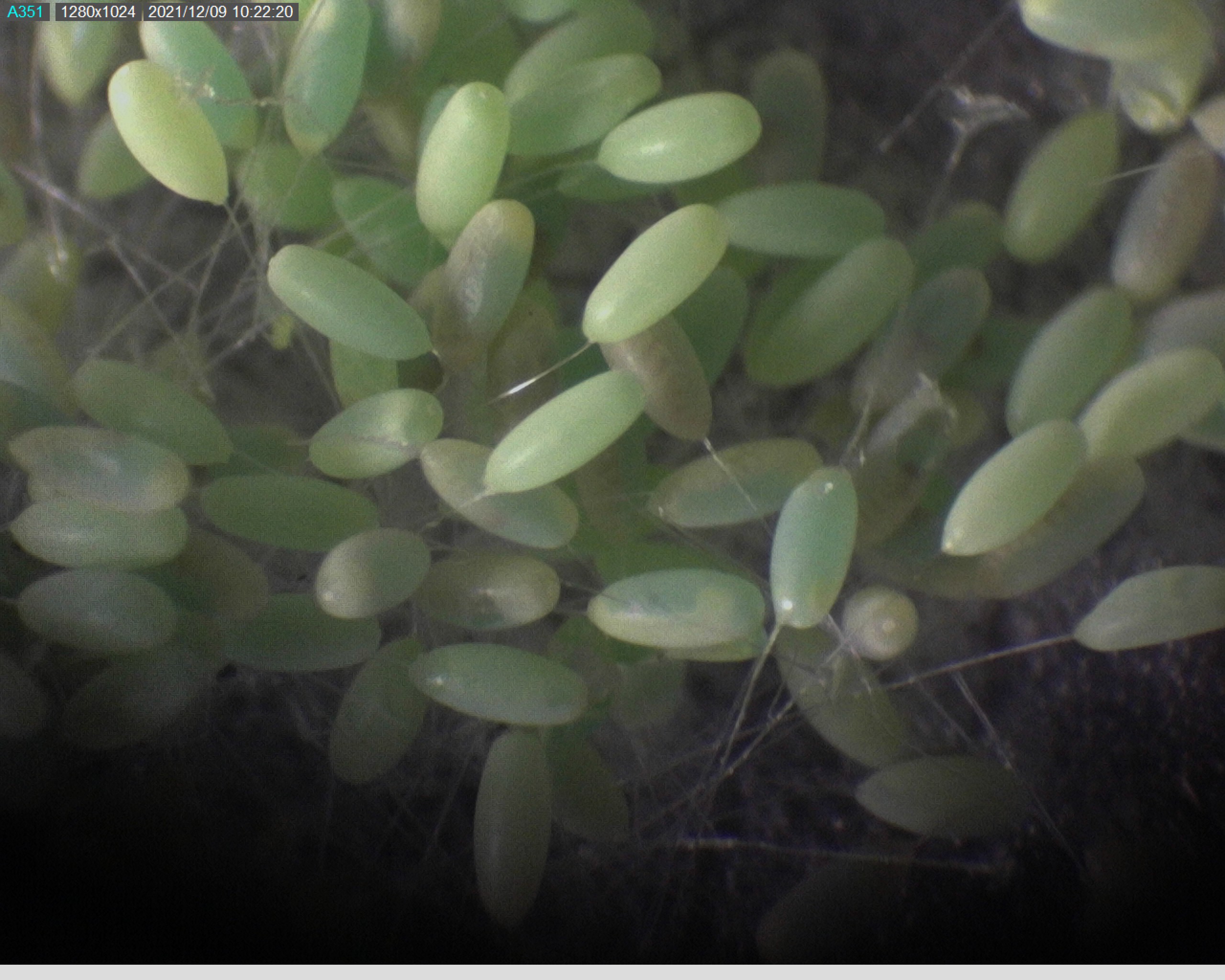Chrysoperla carnea eggs
What pest can I use Chrysoperla carnea to control?
The larvae can be used for the biological control of aphids. However they will also feed on other foliar pests such as thrips, whitefly and moth eggs. The adults feed on pollen and nectar and so are useful pollinators. Because they are quite general in their prey selection, Chrysoperla are a very effective preventative pest control agent. This means that you can apply them periodically to your plants even if there are no obvious symptoms of pests. Chrysoperla eggs are best for this since the life cycle will take longer to complete and they will be active on your plants for longer. Also they can be easier to apply through micromesh coverings (see more details in the eggs section). Best time to first apply them is in mid to late spring when the weather has warmed up a bit, since at this time there will almost always be some insect activity on your plants and the Chrysoperla larvae will find something to feed on once they hatch. For preventative control you only need a relatively low dose (go to eggs section and look for “ How Much Do I Apply”). We recommend reapplying this dose every 2 months up to the end of the growing season.
For obvious or severe infestations then we recommend using larvae rather than eggs since they will get to work faster, eating their way through the pest problem and restoring the health of your plants. Severe infestations are usually obvious e.g. aphid infestations are usually indicated by the appearance of white shed aphid skins on the soil surface and the appearance of sticky leaves. We recommend larvae are applied at a higher dose level for controlling already established infestations: (go to larvae section and look for “How Much Do I Apply”).
How is the product supplied?
Chrysoperla carnea eggs are supplied in cardboard shaker pots.
How do I apply the product?
Eggs can be shaken from the pot evenly over the required treatment area or they can be used as a spot treatment for heavy infestations.
Application of eggs rather than larvae is best for preventative control and can be particularly effective in situations where you have some physical covering over your plants that you don’t want to regularly remove e.g. a mesh system. Eggs can be applied directly to the plants or they can also be scattered over protective mesh in raised beds. The eggs easily drop through even micro-mesh without the need to remove the mesh. Eggs can be useful for controlling cabbage caterpillar eggs when the use of mesh is not 100% effective at preventing the entry of cabbage white butterfly (Pieris brassicae and P. rapae), cabbage moth (Mamestra brassicae) and diamondback moth (Plutella xylostella). Explosions of pest populations such as aphids can happen under mesh if aphids were present but not spotted when the mesh was fixed in place and it can be difficult to introduce Chrysoperla larvae once the mesh is in place.
How many eggs will I need?
The recommended dose for prevention is 10 eggs per m2. One shaker pot of 250 eggs will therefore treat up to 25m2 or 8 raised beds, measuring 4ft x 8ft (1.2m x 2.4m).
Does the product have a shelf life?
It is advised to apply the product immediately upon receipt. Although the eggs will not hatch until 2-3 days after receipt if maintained at ambient temperatures and so could be stored if application is not immediately possible due to adverse weather.
How quickly can the product be delivered?
We are a UK company and produce our own biologicals and so we are able to dispatch organisms the next day with DHL. Please ensure that delivery can be made at the designated address or advise of a safe place for delivery as the quality of the live product may be affected if delivery is delayed. Please note we are unable to supply biological control to the EU

